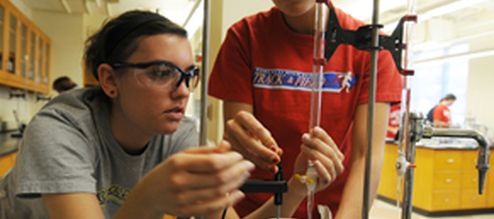Full-Length Archaeal Rad51 Structure and Mutants: Mechanisms for RAD51 Assembly and Control by BRCA2
Document Type
Article
Publication Date
9-2003
Publication Source
EMBO Journal
Abstract
o clarify RAD51 interactions controlling homologous recombination, we report here the crystal structure of the full‐length RAD51 homolog from Pyrococcus furiosus. The structure reveals how RAD51 proteins assemble into inactive heptameric rings and active DNA‐bound filaments matching three‐dimensional electron microscopy reconstructions. A polymerization motif (RAD51‐PM) tethers individual subunits together to form assemblies. Subunit interactions support an allosteric ‘switch’ promoting ATPase activity and DNA binding roles for the N‐terminal domain helix–hairpin–helix (HhH) motif. Structural and mutational results characterize RAD51 interactions with the breast cancer susceptibility protein BRCA2 in higher eukaryotes. A designed P.furiosus RAD51 mutant binds BRC repeats and forms BRCA2‐dependent nuclear foci in human cells in response to γ‐irradiation‐induced DNA damage, similar to human RAD51. These results show that BRCA2 repeats mimic the RAD51‐PM and imply analogous RAD51 interactions with RAD52 and RAD54. Both BRCA2 and RAD54 may act as antagonists and chaperones for RAD51 filament assembly by coupling RAD51 interface exchanges with DNA binding. Together, these structural and mutational results support an interface exchange hypothesis for coordinated protein interactions in homologous recombination.
Inclusive pages
4566-4576
ISBN/ISSN
0261-4189
Publisher
EMBO Press
Volume
22
Peer Reviewed
yes
Issue
17
Sponsoring Agency
National Cancer Institute; the Wellcome Trust; Medical Research Council; National Institutes of Health; Skaggs Institute for Chemical Biology; Canadian Institutes of Health Research
eCommons Citation
Shin, David S.; Pellegrini, Luca; Daniels, Douglas S.; Yelent, Biana; Craig, Lisa; Bates, Debbie; Yu, David; Shivji, Mahmud K.; Hitomi, Chiharu; Arvai, Andrew S.; Volkmann, Niels; Tsuruta, Hiro; Blundell, Tom L.; and Tainer, John A., "Full-Length Archaeal Rad51 Structure and Mutants: Mechanisms for RAD51 Assembly and Control by BRCA2" (2003). Chemistry Faculty Publications. 106.
https://ecommons.udayton.edu/chm_fac_pub/106
COinS



